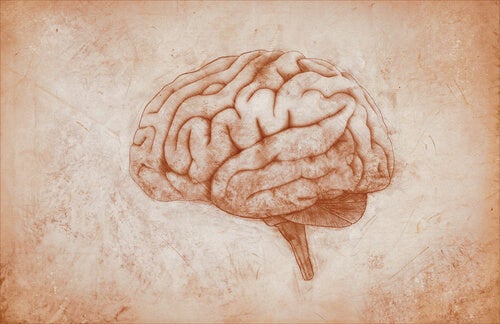The motor cortex is a neocortical region in charge of directing each of our movements. It’s located in the frontal lobe and is made up of the primary motor cortex, the premotor cortex, and the supplementary motor area.
In this article, we’re going to focus on this last-mentioned area. We’ll review its component parts, its functions, and the alterations it might suffer as a result of injury or other types of affectations.
Supplementary motor area
The supplementary motor area (SMA) occupies the posterior third of the superior frontal gyrus and coordinates postural movements. Its neurons project to the spinal cord. Consequently, it plays an important role in the direct control of mobility. In fact, its activity is relevant not only to initiating actions but also to preparing and monitoring them.
Electrical stimulation of the SMA can produce elevations of the opposite arm, deviations of the head and eyes, and bilateral synergistic contractions of the muscles of the trunk and the legs. Most of these movements are described as postural-type tonic contractions.
The SMA is composed of the pre-supplementary motor area and is related to the supplementary ocular field. Together, the three make up the supplementary motor complex (SMC) (Nachev, Kennard & Husain, 2008). The anatomical and neurophysiological characteristics of each one are totally different.
Compared to the primary motor areas, the SMC exhibits greater sensitivity to tasks in which the action has a wider range and isn’t specified by the immediate external environment. The affectation of the whole could interfere in the commission and omission of actions.
Functions of the supplementary motor area
Simple movements are mediated by activation of the primary motor area and sensory cortex. The SMA is involved with these two areas in the preparation, initiation, and monitoring of complex movements.
Through the study of blood circulation, it’s been observed that, during the execution of complex movements, blood flow increases in the primary motor area and extends to the supplementary area. However, when the same sequence is only executed mentally, it increases blood flow only in the SMA.
Research conducted with functional magnetic resonance (FMR) and with positron emission tomography (PET) discovered significant participation of the SMA in the control and initiation of movement and the sequences of tasks. The researchers also specified that this area isn’t only an exclusive region for movement, but a mixed sensorimotor part. However, its primary purpose is motor function. This area also intervenes in:
- Bimanual coordination.
- Reception of sensory stimuli.
- Recovery and repetition of learned tasks.
- Motor learning of movement sequences.
- It acts as a link between the limbic system and the motor apparatus.

SMA disturbances
SMA syndrome is a consequence of surgery or injury to this area. Immediately afterward, it manifests as contralateral hemiplegia.
Those who suffer from SMA syndrome present a severe reduction in contralateral spontaneous motor activity. They also experience facial paralysis and reduced spontaneous speech. Furthermore, involuntary movement of the extremities is normal. In addition, the syndrome may be accompanied by hemiataxia, hemiapraxia, hemineglect, hyperreflexia, and hypertonicity.
Movement recovery is usually complete around eleven days after SMA surgery. However, fine motor skills may not be recovered until around two to six weeks later. Moreover, complex tasks that require special skills, as well as movements that are executed at fast speeds, could be permanently affected. The following long-term consequences may occur:
- Alterations of fine movements with the hands.
- Affectations in the alternating fine movements of both hands. This is especially the case in complex tasks that require fast execution or great skill.
The appearance of language deficit syndrome has also been detected in SMA lesions. It might involve:
- Echolalia.
- Paraphasias.
- Hypofluent language.
- Telegraphic language.
In summary, the SMA is an important cortical region for the planning, initiation, and supervision of movements. Although its functions aren’t clearly defined and multiple roles are considered, this region is central for the continuity of complex actions and for the coordination of manual movements.
The post The Supplementary Motor Area of the Brain appeared first on Exploring your mind.



















Comments